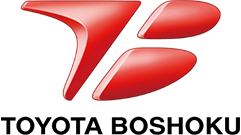Building efficient production lines with a focus on Karakuri improvement
The Sanage Plant’s seat assembly line evolves into a “model line” through the united efforts of three divisions
The automation of production sites is progressing day by day, but not all processes can be automated. In processes that involve manual labor, numerous on-site innovations are being used to improve efficiency and reduce workload. Those innovations that make low-cost improvements to on-site problems or issues by using natural energy (e.g. gravity) and simple mechanisms/systems (e.g. gears and the principle of leverage) are known as “Karakuri kaizen” (Karakuri improvements). The word “Karakuri” (meaning a mechanism or clever device) is derived from the traditional Japanese Karakuri puppets that employed clockwork mechanisms.
In the seat production process at the Sanage Plant, we are working to create a production process that integrates Karakuri, people, and technological innovation with the aim of creating a model line that is at the forefront of the entire Toyota Boshoku group. The Manufacturing Division (the lead division), Production Engineering Division, and Production Research Division are working in unison to implement a cycle of Karakuri improvement whereby cases of improvement globally are incorporated in the seat production process, and the results of this are again disseminated as information.
It is not easy to devise and fabricate a Karakuri device that does not directly use energy such as electricity or air, but instead employs gravity, etc. arising from existing processes, applying this to gears or the principle of leverage. However, through such improvement activities, the workers themselves have realized that tasks they had previously taken for granted were actually burdensome, and they have also become more motivated to make new improvements.
In fiscal 2022, the seat production line at the Sanage Plant succeeded in making almost 30 Karakuri improvements. Other than these 30 cases, there are also examples of failures, such as improvements that were made but increased the burden elsewhere, or did not work as expected when applied to the process. We will promote new improvements by learning from these failures. The Sanage Plant will serve as a model line, stimulating Karakuri improvements at other plants, and we will steadily build on our achievements.
More efficient positioning of belt tightening tool
Issue
Because the tightening positions are on either side of the seat, the operator had to change body orientation when tightening, and the tool was positioned at a distance, making it necessary to reach out to grasp it.
Improvement
result
To ensure that the tool comes to the right place at the right time and in the right orientation, an improvement was made so that the tool moves in conjunction with the conveyor and its orientation also changes. This allows work to be performed at a close distance to the operator, eliminating wasteful movements.
Before improvement
After improvement
Improvement of working posture when tightening bolts
Issue
When tightening bolts, the tool was manually pulled to the tightening position. In addition, because the front seat’s back frame was in a collapsed state, the tightening position was low, causing the operator to work in a stooped posture.
Improvement
result
Using the line conveyor’s existing power, the front seat’s back frame is raised, making the bolt-tightening position higher. The tightening tool also moves together with the movement of the frame, bringing it closer to the operator. This has improved the operator’s work posture and made it easier to work.
Before improvement
After improvement
Automatic assembly of headrest supports
Issue
To insert the headrest support, the operator tapped it in firmly by hand.
Improvement
result
The headrest support is set on a special jig and this is inserted into the seat. Using the power of the conveyor, the head is then pushed down three times under its own weight to insert the support, thereby reducing the physical strain on the operator.

 Media site to convey the Toyota Boshoku group vision for the future and initiatives
Media site to convey the Toyota Boshoku group vision for the future and initiatives



